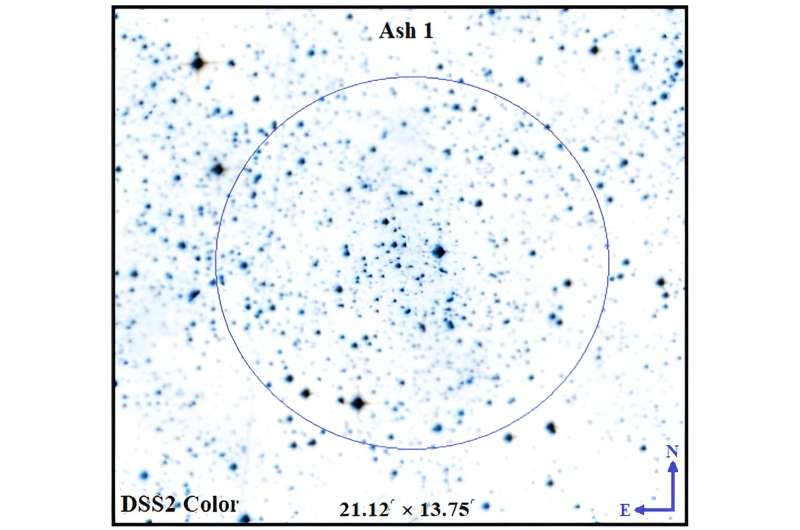
August 27, 2024 by Tomasz Nowakowski , Phys.org
Collected at: https://phys.org/news/2024-08-astronomers-cluster-gaia.html
Using ESA’s Gaia satellite, astronomers have serendipitously discovered a new open cluster in the Milky Way galaxy. The newfound cluster, which received the designation Ash-1, is relatively young and consists of at least 400 member stars. The finding was reported in a research paper published August 21 on the pre-print server arXiv.
Open clusters (OCs), formed from the same giant molecular cloud, are groups of stars loosely gravitationally bound to each other. So far, more than 1,000 of them have been discovered in the Milky Way, and scientists are still looking for more, hoping to find a variety of these stellar groupings.
Expanding the list of known galactic open clusters and studying them in detail could be crucial for improving our understanding of the formation and evolution of our galaxy.
Now, a team of astronomers led by Ashraf Latif Tadross of the National Research Institute of Astronomy and Geophysics in Cairo, Egypt, reports the detection of a new Galactic open cluster. They detected the new OC in the constellation Sagittarius in the field of the poorly studied cluster Majaess 190.
“Examining the area surrounding the open star cluster Majaess 190, we have discovered another cluster entirely by chance. It exists in a denser star field than Majaess 190, so it was difficult to recognize over the background field,” the researchers explained.
The newfound cluster was named after the first three letters of the team leader’s first name—Ash-1. The collected data indicate that Ash-1 is a dynamically relaxed cluster located some 4,400 light years away from the Earth.
According to the paper, Ash-1 has a limiting radius of about 28.7 light years and its total mass is 455 solar masses. The cluster is estimated to be 630 million years old, while its relaxation time was found to be some 25 million years. The astronomers managed to identify 410 most likely member stars of this cluster.
Based on the obtained data, the authors of the study were also able to determine fundamental parameters of the nearby cluster Majaess 190, finding that it is smaller, less massive, but much older than Ash-1. The limiting radius of Majaess was measured to be approximately 12 light years, while its total mass was calculated to be 375 solar masses. The age of this cluster was estimated to be about 4 billion years.
Summing up the results, the researchers noted that Ash-1 and Majaess 190 may form a binary system. However, further observations of these clusters are required in order to confirm this hypothesis.
“We believe that the two clusters are different with some overlapping because they form a binary system, which requires another detailed study,” the scientists conclude.
More information: A. L. Tadross, Discovered a new open cluster near the poorly studied Majaess 190, arXiv (2024). DOI: 10.48550/arxiv.2408.11383
Journal information: arXiv

Leave a Reply